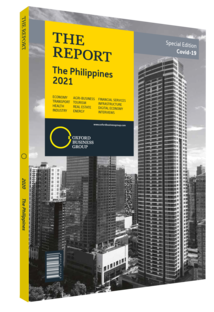How the Philippines is using policy tools for economic recovery
The Philippine government launched a four-pillar socio-economic strategy to mitigate the impact of the pandemic and aid the national recovery effort. The framework aims to provide emergency support for vulnerable groups and individuals; expand medical resources to fight Covid-19 and ensure the safety of health workers; implement fiscal and monetary initiatives to keep the economy afloat; and launch an economic recovery plan to create jobs and sustain growth.
Bayanihan 1 & 2
The government passed the Bayanihan to Heal as One (Bayanihan 1) Act on March 25, 2020, granting President Rodrigo Duterte emergency powers to address the crisis. By the end of the second quarter a P595.6bn ($11.8bn) fiscal package, amounting to 3.1% of 2019 GDP, had been implemented to provide emergency support. The funding included a P205bn ($4.1bn) cash-aid programme for 18m low-income households; close to P57bn ($1.1bn) in social-protection measures for workers; a P120bn ($2.4bn) credit guarantee for small and medium-sized enterprises (SMEs) and agriculture; and P2.5bn ($49.7m) for zero-interest loans for farmers and fishers.
A second stimulus, the Bayanihan to Recover as One (Bayanihan 2) Act, was signed in September 2020. The P165.5bn ($3.3bn) measure comprises P140bn ($2.8bn) for hard-hit industries and a standby fund of P25.5bn ($507.2m) until the 2021 budget takes effect. Key earmarks include P39.5bn ($785.6m) for government financial institutions; P24bn ($477.3m) in loans for farmers; P13.5bn ($268.5m) for the health response; P13bn ($258.6m) for work and involuntary separation pay; P9.5bn ($188.8m) for transport programmes; and P6bn ($119.3m) in social welfare. The law also mandates a 60-day moratorium on current and outstanding loans.
Create
Other legislative measures to support economic growth include the Corporate Recovery and Tax Incentives for Enterprises (CREATE) bill, originally issued in September 2019. CREATE is the second package of the Duterte administration’s Comprehensive Tax Reform Programme, and is on track to be enacted before the end of 2020 since approval was given by both the House of Representatives and the Senate. CREATE is set to cut the corporate income tax rate from 30% – the highest in ASEAN – to 25%, before further reducing this by one percentage point per year from 2023, to reach 20% by 2027. Proponents say the new rate will make the country more competitive, attract high-value investment and create more jobs. The government expects it to benefit micro-enterprises and SMEs – which total over 90,000 and are the foundation of the economy. Government estimates in mid-2020 placed the potential savings for businesses at P42bn ($835.3m) by the end of the year and in excess of P625bn ($12.4bn) within five years of implementation. “The tax reform is one of the major points on the agenda of the Department of Finance for the post-Covid-19 recovery,” Ephyro Luis Amatong, commissioner of the Securities and Exchange Commission, told OBG. “It is intended to lower the corporate income tax rate across the board and indirectly assist the post-pandemic economic response.”
However, as of October 2020 some local and foreign investors represented by industry groups, including the Joint Foreign Chambers of the Philippines and the US-ASEAN Business Council, were seeking a five-year exemption from paying new taxes under CREATE to give them time to recover from Covid-19-related losses.
2021 Budget
The approved P4.5trn ($89.5bn) budget for 2021 is 9.9% larger than in 2020 and equal to 21.8% of projected GDP. It targets health care improvements, food security, job creation and digitalisation, as well as pandemic support. Almost 40% will go towards social services (P1.7trn, $33.8bn), including funding for health, social protection and education. Approved by the House in October 2020 and passed by the Senate in late November, it will undergo a final review in December. The budget – supported by Bayanihan 2 and CREATE – should help jump-start economic recovery in 2021 and lay the foundations for further growth.
You have reached the limit of premium articles you can view for free.
Choose from the options below to purchase print or digital editions of our Reports. You can also purchase a website subscription giving you unlimited access to all of our Reports online for 12 months.
If you have already purchased this Report or have a website subscription, please login to continue.

